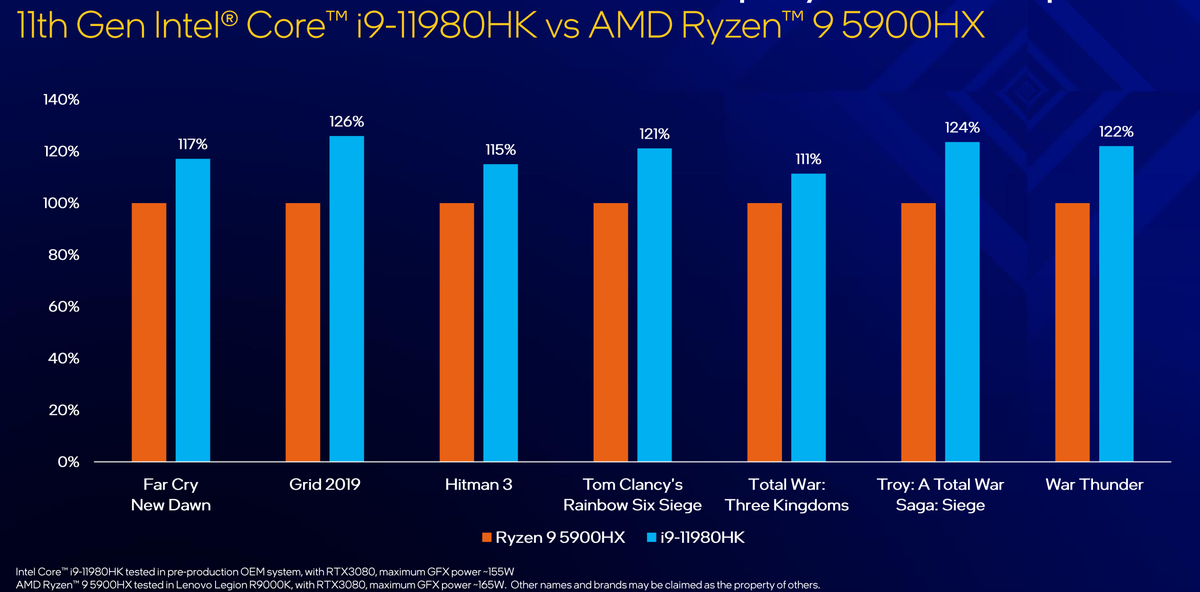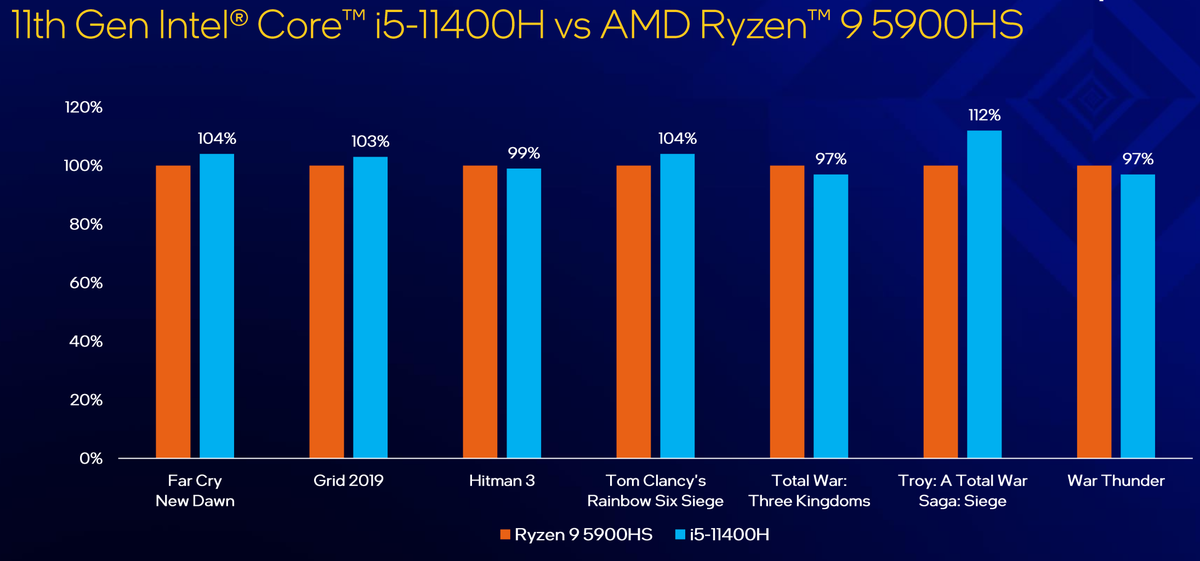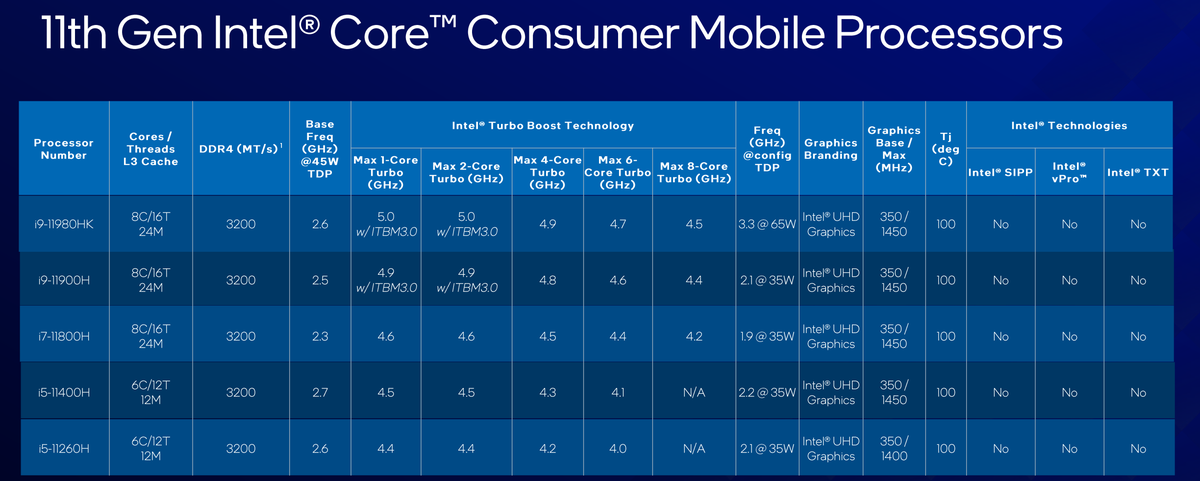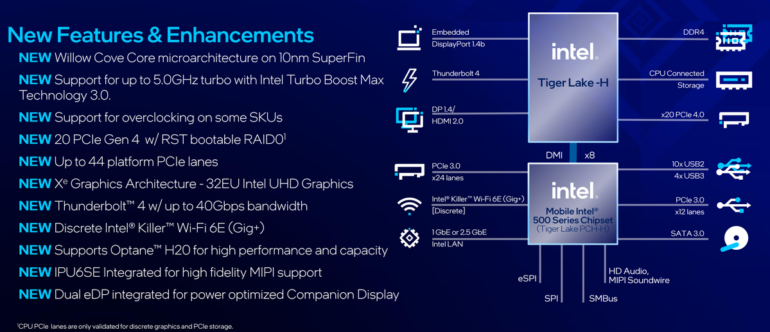Intel has unveiled its Tiger Lake-H family, otherwise known as 11th gen Intel Core H-series, aimed at laptop gamers, creative content makers, and enthusiasts, as well as a pair of Xeon processors for mobile workstations.
Thanks to its Willow Cove core, Intel is claiming the title of the world’s fastest single-threaded laptop processor, which boasts a 12% improvement, as well as 19% improved multi-threaded performance over its 10th generation Comet Lake predecessors.
While much of the semiconductor industry faces shortages, Intel said there are 80 laptop designs in the pipeline, and over 1 million chips have been shipped to laptop makers already.
The H-series chips are built on the 10-nanometre SuperFin process, have 20 PCIe gen 4 lanes attached to the CPU, with 44 other Gen 3 lanes available on the platform, as well as support for Thunderbolt 4, and Wi-Fi 6E.
Compared to its immediate predecessor, the i9-11980HK was able to beat an i9-10980HK by between 5% and 21% in certain games, Intel said, while also outdoing a Ryzen 9 5900HX launched earlier this year by between 11% and 26%.


Comparing an i5-11400H to a Ryzen 9 5900HS, the i5 was able to record numbers between 97% to 112% on a series of games, Intel claimed.


Although it is expected most of the H-series will be accompanied by discrete graphics, the chips do arrive with 32EU graphics that make use of Intel’s Xe architecture, which the chip giant said would be able to handle “speedy” 4K video workloads. It also has AI-based features, such as removing an object from a video without removing every frame.
Compared to 10th gen chips, the i9-11980HK provides 22% quicker photo processing, 20% quicker video editing, and 14% faster Office workloads. Compared to the Ryzen 5900HX, those numbers were claimed to be 18%, 24%, and 19%, respectively.
Against a Coffee Lake i7-9850H released in 2019, the i9-11950H is providing 24% better single-threaded integer compute, 52% faster multi-threaded integer compute, 49% better performance on media and entertainment workloads, and 36% better general operations performance.
For users that want to use ECC memory, they are still restricted to having to use the Xeon W-11955M or W-11855M.
While Intel was happy enough to compare itself to AMD, the company did not provide comparisons to Apple and its M1 chip. When asked about it, Intel representatives were coy and pointed to being able to deliver “more solutions” and form factors. Apple now is using its M1 to power its Mac Mini, Macbooks, and iMacs.
Last month, the company launched its 10-nanometre Xeon Scalable processors based on Ice Lake.







